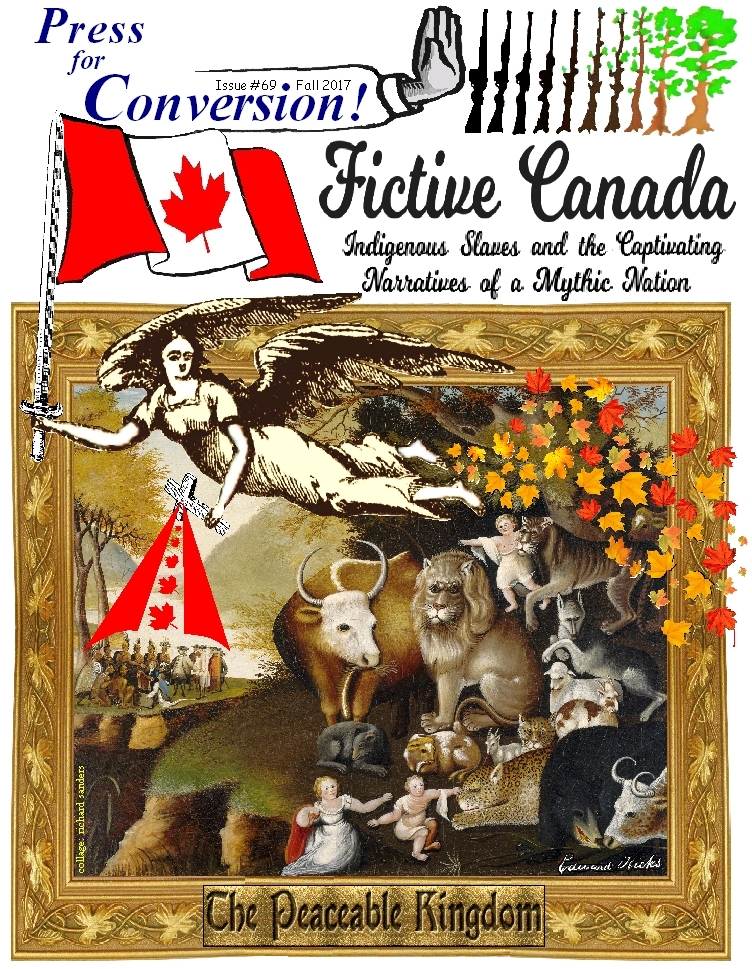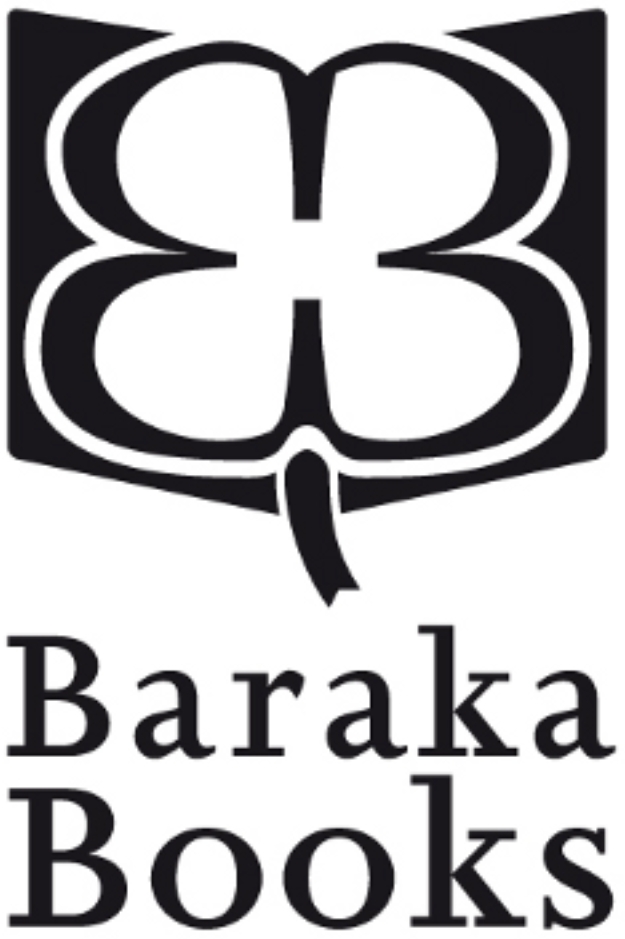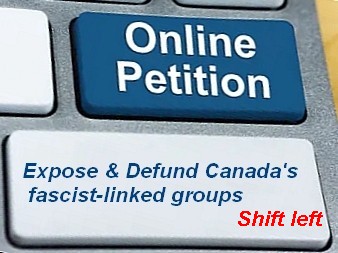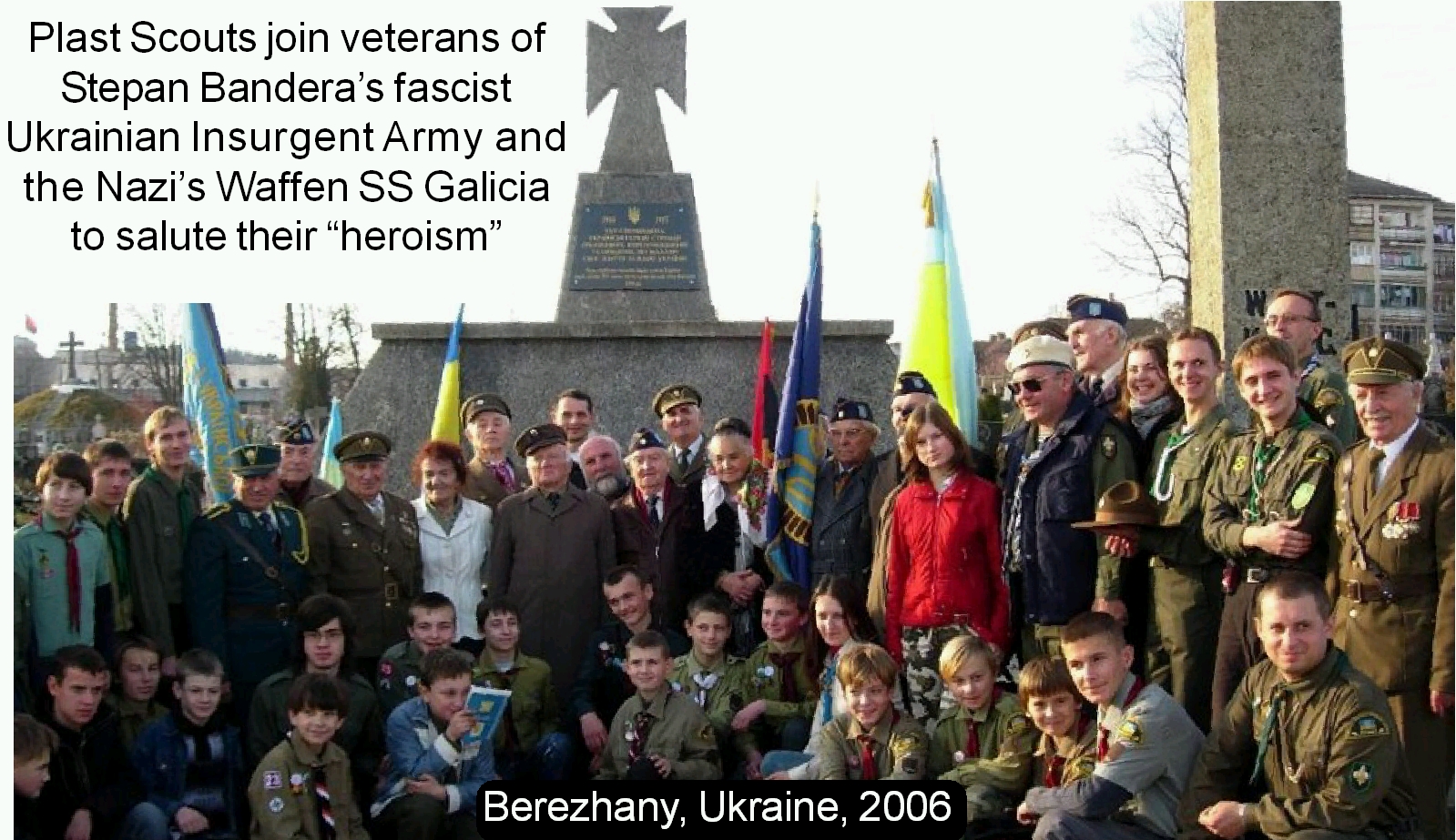 Freeland
joined Edmonton’s Plast troop in 1977. That year, her mother, Halyna Chomiak
Freeland, another intensely passionate Ukrainian nationalist, separated from her
nonUkrainian husband and left Peace River, Alberta. Upon moving to Edmonton,
Chrystia Freeland could become much closer to her mother’s father, Michael
Chomiak (aka Mykhailo Khomiak), his other children and to their extended
families. Chomiak had been the Nazi’s top Ukrainian-language news propagandist
in Europe throughout WWII. Upon coming to Canada after the war he became deeply
involved in Edmonton’s Ukrainian community, which makes up 14% of the city’s
total population.3
Freeland
joined Edmonton’s Plast troop in 1977. That year, her mother, Halyna Chomiak
Freeland, another intensely passionate Ukrainian nationalist, separated from her
nonUkrainian husband and left Peace River, Alberta. Upon moving to Edmonton,
Chrystia Freeland could become much closer to her mother’s father, Michael
Chomiak (aka Mykhailo Khomiak), his other children and to their extended
families. Chomiak had been the Nazi’s top Ukrainian-language news propagandist
in Europe throughout WWII. Upon coming to Canada after the war he became deeply
involved in Edmonton’s Ukrainian community, which makes up 14% of the city’s
total population.3
Her move to Edmonton was a turning point in
Freeland’s life because she became immersed in that community’s ubiquitous,
Ukrainian enculturation programs. Besides joining Plast, she began classes in
two Ukrainian education programs: Alberta’s government-funded, bilingual
Ukrainian-English public school system, and the Ukrainian community’s
ultrapatriotic, nationalist "Saturday schools."
At age 11, in 1979, Chrystia was interviewed
by her mother’s brother, Bohdan Chomiak, son of Michael, for a nationalist
Ukrainian newspaper, Student, which has been distributed to Ukrainian
youth in universities across Canada since the late 1960s. Her uncle Bohdan asked
Chrystia to compare the two Ukrainian education programs in which she was
enrolled. She replied that
historically, geographically and
gramatically [sic] speaking ... you learned more in the Saturday school....
One of the biggest differences though is that the Saturday schools are much
more patriotic and religious, so that history will have a lot of facts
about how brave and gallant the Ukrainian kings were. And it will usually be
stressed. Sometimes they’ll talk about the negative points, but their
perspective will be that of the Ukrainian nation.4 (Emphasis added.)
 While this may be Freeland’s first appearance
in print media, four members of her family (the children of Michael Chomiak)
were involved in Student for about a decade. Her uncle Bohdan Chomiak had
been on its staff (1972, 1978-80) and was a frequent contributor during the
1970s.5 His aunts (Chrystia, Natalka and Halyna Chomiak) were also active in the
magazine. Freeland’s aunt, Chrystia Chomiak, edited issues of Student
(1969-70) and was involved in organising, producing and publishing it
(1973-74).6 Natalka Chomiak wrote for Student and worked for its
publishers (1972-74), the Ukrainian Canadian Students Union (SUSK).7 Chrystia
Freeland’s mother, Halyna Chomiak Freeland, also wrote for Student. In
her late 20s in 1974, she penned an article giving insights into childhood
"pressures" from her parents (Alexandra and Mykhailo) and the Ukrainian
community:
While this may be Freeland’s first appearance
in print media, four members of her family (the children of Michael Chomiak)
were involved in Student for about a decade. Her uncle Bohdan Chomiak had
been on its staff (1972, 1978-80) and was a frequent contributor during the
1970s.5 His aunts (Chrystia, Natalka and Halyna Chomiak) were also active in the
magazine. Freeland’s aunt, Chrystia Chomiak, edited issues of Student
(1969-70) and was involved in organising, producing and publishing it
(1973-74).6 Natalka Chomiak wrote for Student and worked for its
publishers (1972-74), the Ukrainian Canadian Students Union (SUSK).7 Chrystia
Freeland’s mother, Halyna Chomiak Freeland, also wrote for Student. In
her late 20s in 1974, she penned an article giving insights into childhood
"pressures" from her parents (Alexandra and Mykhailo) and the Ukrainian
community:
[F]or me to grow up Ukrainian was to grow
up with the idea that I was different and therefore special.... [We] were
allowed only to speak Ukrainian at home.
While growing up we were under pressure
from our parents to be aware of our Ukrainianism and to be proud of it. This
pressure also came from the Ukrainian community. It was exerted in many ways.
I and the other Ukrainian children that I knew were taught about the Ukraine —
its history, beauty, culture and vast richness. Both our parents and the
Ukrainian community pressured us to marry Ukrainians and to keep working in
Ukrainian organizations. As a distant goal, we looked forward to the
liberation of Ukraine and I can remember childhood dreams of leading armies
down the mountain sides. This pressure to remain proudly nationalistic was
very necessary. It counter-acted the dominant social pressure from the
general society to assimilate.8 (Emphasis added.)
Halyna who went into law, like her father
Michael Chomiak, moved to Ukraine to help draft its postSoviet constitution
(1992-2002). Her work there was funded by George Soros.9
Chomiak’s children and grandchildren could
not help but be deeply affected by the belief system in which they were all but
totally immersed. From an early age, they were inculcated into nationalistic
Ukrainian culture not only by family and friends, Ukrainian schools and Plast,
but by a myriad of other nationalist groups and the cultural events and
activities that they organised. The Ukrainian Catholic church was also
influential. As Freeland said of her mother, "when we were growing up, she
insisted my sister and I go to church every Sunday with our grandfather."10
From childhood on, Freeland’s enculturation
into the cause of Ukrainian nationalism was practically inescapable. It is
little wonder then that as an adult, her commitment and dedication to this cause
has been relentless. Aided by her intelligence, her command of language, her
extreme confidence and personal chutzpah, Freeland became an outspoken voice
promoting the mythic narratives of Ukrainian nationalism. Her grandfather would
surely have been proud of her skills as a mass media news propagandist, and as a
politician implementing the Russophobic and antisocialist policies that dominate
their community.
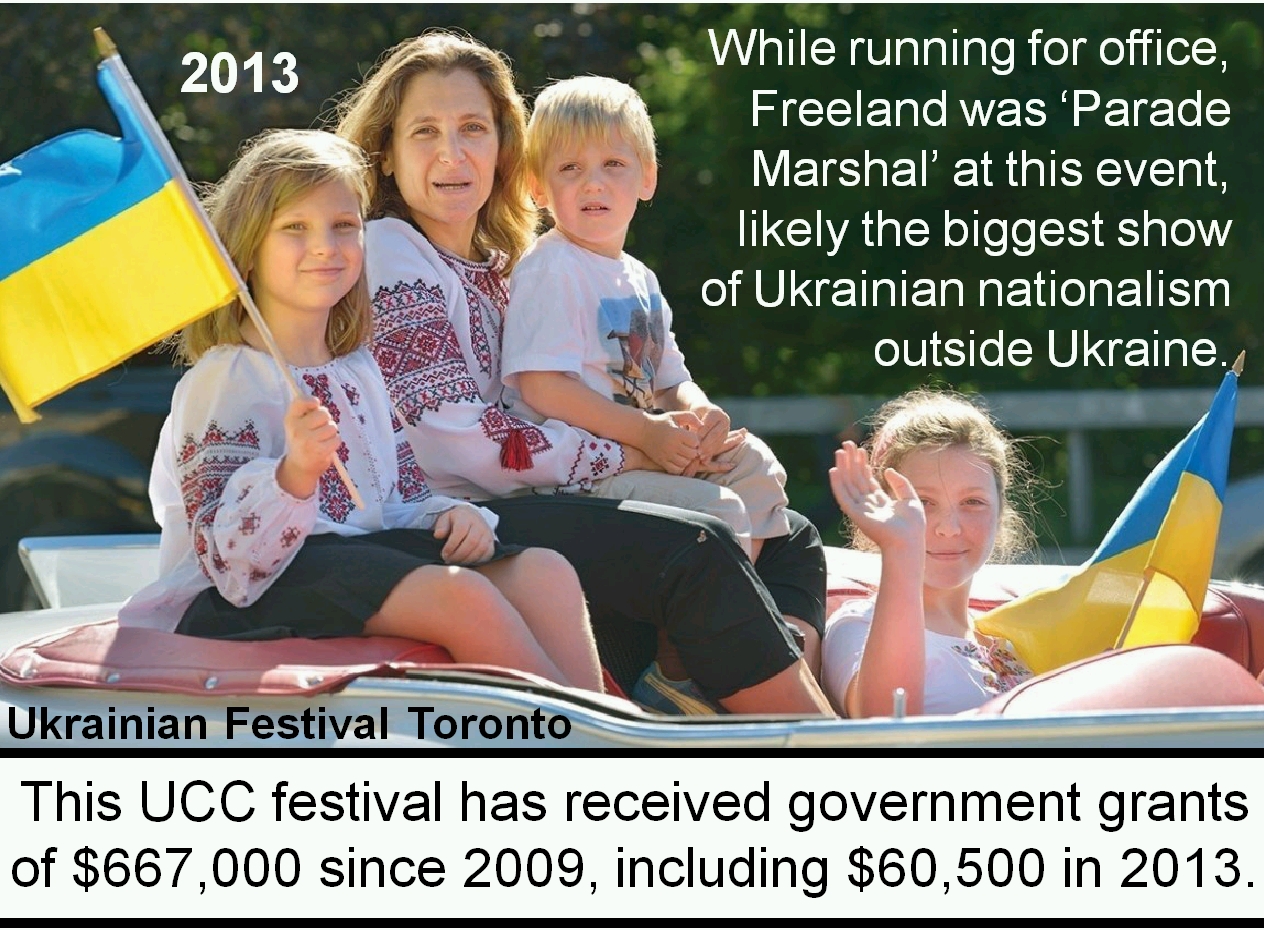 Freeland
has also passed on the tradition to her own family. She has for example involved
her children in a Toronto festival which is likely the world’s largest Ukrainian
nationalist event outside Ukraine. (The local branch of the Ukrainian Canadian
Congress (UCC) has received $667,000 since 2009 to organize this event.11) In
2013, when Freeland was the Liberal Party’s "star candidate" running for
parliament, she was honoured to be the festival’s Parade Marshal. Heading the
parade were a boy and girl in traditional Ukrainian dress carrying the event’s
official banner. Then came veterans bearing the flags of Ukraine, Canada, the US
and NATO. Behind them was a military-style band with 40 uniformed youth marching
in formation. Next in line was Freeland waving from a vintage white Cadillac
with her young children. Another military-style band soon
marched by with 60 uniformed members12 of the UYA. This affiliate of the League
of Ukrainian Canadians represents the OUN(B) faction of Ukrainian nationalists.
As such, these Bandera youth are taught to hail their fascist war hero with
cult-like reverence.
Freeland
has also passed on the tradition to her own family. She has for example involved
her children in a Toronto festival which is likely the world’s largest Ukrainian
nationalist event outside Ukraine. (The local branch of the Ukrainian Canadian
Congress (UCC) has received $667,000 since 2009 to organize this event.11) In
2013, when Freeland was the Liberal Party’s "star candidate" running for
parliament, she was honoured to be the festival’s Parade Marshal. Heading the
parade were a boy and girl in traditional Ukrainian dress carrying the event’s
official banner. Then came veterans bearing the flags of Ukraine, Canada, the US
and NATO. Behind them was a military-style band with 40 uniformed youth marching
in formation. Next in line was Freeland waving from a vintage white Cadillac
with her young children. Another military-style band soon
marched by with 60 uniformed members12 of the UYA. This affiliate of the League
of Ukrainian Canadians represents the OUN(B) faction of Ukrainian nationalists.
As such, these Bandera youth are taught to hail their fascist war hero with
cult-like reverence.
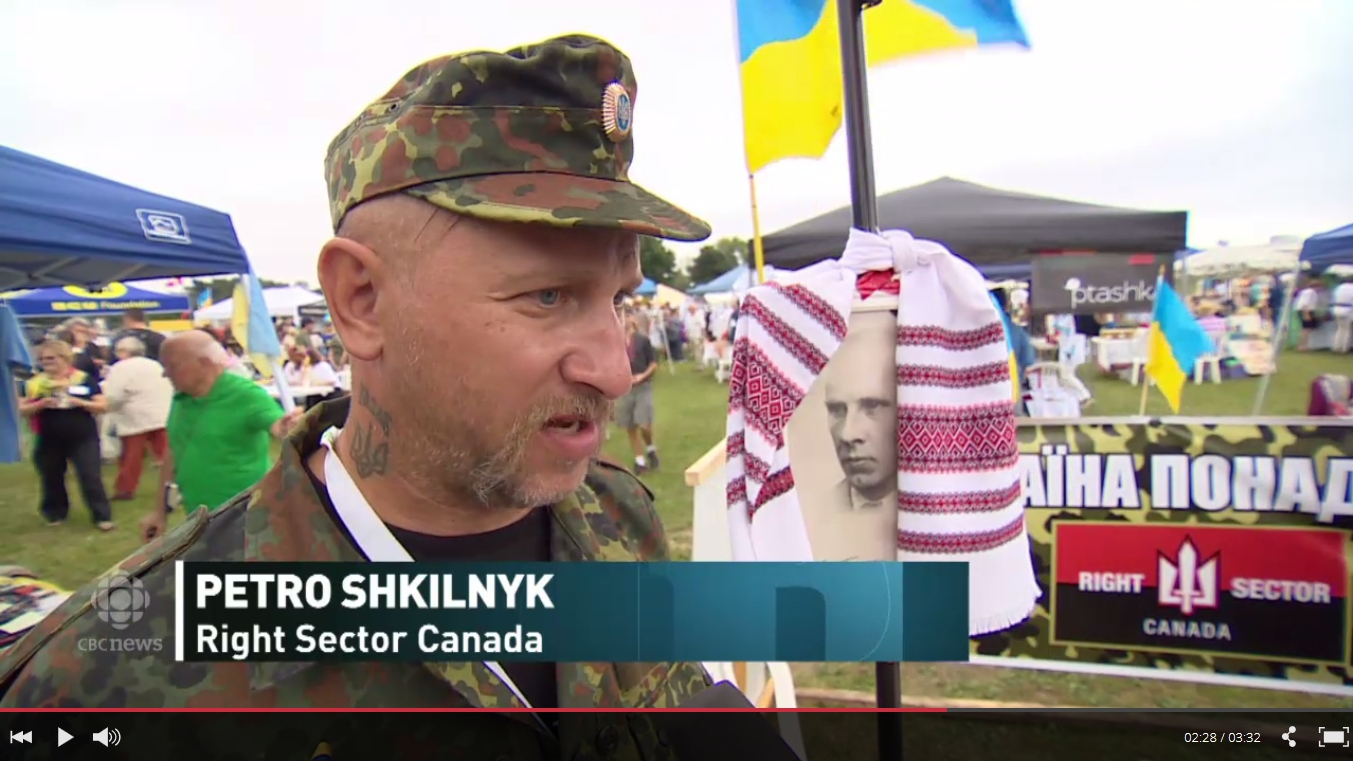 Toronto’s Ukrainian Festival has everything
to be expected from these annual family events: music, dancing, food, and
politicians from all levels of government and Canada’s three largest political
parties. It has also permitted fundraising for a far-right paramilitary group
whose street fighters are known for brutal violence in Ukraine. Toronto’s 2014
Ukrainian Festival allowed Right Sector Canada to raise money to buy military
equipment for their fighters in Ukraine. CBC’s TV news showed Right Sector’s
table with images of Bandera.13 That year’s festival received a $99,700 Canadian
government handout.14
Toronto’s Ukrainian Festival has everything
to be expected from these annual family events: music, dancing, food, and
politicians from all levels of government and Canada’s three largest political
parties. It has also permitted fundraising for a far-right paramilitary group
whose street fighters are known for brutal violence in Ukraine. Toronto’s 2014
Ukrainian Festival allowed Right Sector Canada to raise money to buy military
equipment for their fighters in Ukraine. CBC’s TV news showed Right Sector’s
table with images of Bandera.13 That year’s festival received a $99,700 Canadian
government handout.14
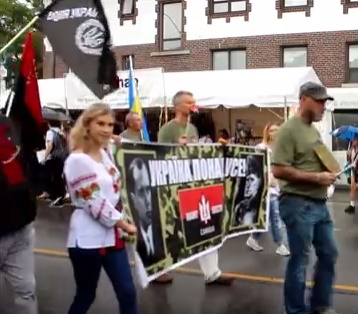 In 2016, when Freeland marched with her
children in this Ukrainian parade, Right Sector Canada marched close behind
them. Among them, Ukrainian youth carried a banner bearing a large portrait of
Bandera. The red and black battle flag of his Ukrainian Insurgent Army was held
high.15 To hold that year’s parade, UCC-Toronto received $58,200 in federal
government funds.16
In 2016, when Freeland marched with her
children in this Ukrainian parade, Right Sector Canada marched close behind
them. Among them, Ukrainian youth carried a banner bearing a large portrait of
Bandera. The red and black battle flag of his Ukrainian Insurgent Army was held
high.15 To hold that year’s parade, UCC-Toronto received $58,200 in federal
government funds.16
As
usual, Toronto’s 2016 parade enjoyed the avid participation of Ukrainian
nationalist groups which glorify fascist army formations that collaborated with
the Nazis. In this annual display of Ukrainian patriotism, hundreds of children
and youth were joined by politicians (representing the Conservatives, Liberals
and NDP), veterans, Ukraine’s Ambassador to Canada (Andriy Shevchenko), and
uniformed members of the Bandera youth movement who filed by in-step behind the UYA marching band (Baturyn).
(This band played at a
celebration of Bandera's 100th birthday in Munich, Germany, in 2009.) The parade also featured such young role
models as Miss Teenage Canada and Miss Ukraine Toronto. Children from Ukrainian
schools and uniformed members of Toronto’s Plast troop also took part.17
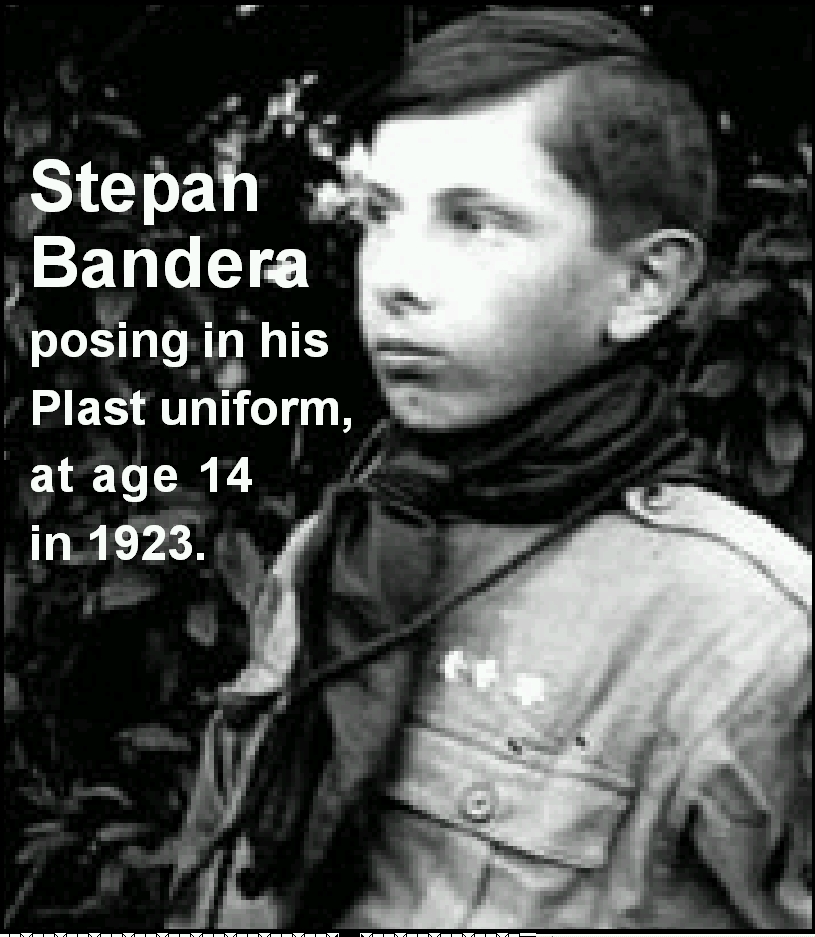 This Toronto festival and similar events
continue to demonstrate that Canada’s far-right Ukrainian diaspora is alive and
well. This ethnonationalist community continues to thrive thanks in no small
part to ongoing government funding that has funneled millions in grants to their
right-wing member groups and events.
This Toronto festival and similar events
continue to demonstrate that Canada’s far-right Ukrainian diaspora is alive and
well. This ethnonationalist community continues to thrive thanks in no small
part to ongoing government funding that has funneled millions in grants to their
right-wing member groups and events.
Thanks to state generosity, Canada’s
Ukrainian nationalists have been able to foster their cultural traditions,
beliefs and narratives through the ritualistic inculcation of children and
youth. Dominated by anticommunist groups with fascist roots, this community’s
young have not been made aware that some of their most highly-revered wartime
heroes, organizations and movements were deeply engaged in collaborating with
the Nazis. Those raised in this amnesic cultural milieu are proud to carry this
flame of Ukrainian nationalism and to pass it on to future generations, just as
it was passed—with government assistance—to them.
The July-1973 issue of Student (p.4)
noted that she ran a SUSK summer program with $11,000 from the Canadian
government (the equivalent of $66,500 in 2020) to produce TV shows and a
national conference. The conference featured Trudeau’s External Affairs Minister Mitchell
Sharp, who presented the government’s official position on the USSR.
http://bit.ly/N-Chom2
8. Halya Chomiak, "In Response," Student,
Jan. 1974, p.3. http://bit.ly/H-Chom
9. Marko Levytsky, "Ukrainian Legal
Foundation’s Halyna Freeland ‘Independent thinking is hard to acquire,’" Apr.
29, 1999. http://bit.ly/HalSor
10. Chrystia Freeland, "The richness of her
life," Financial Times, Jul. 13, 2007.
http://bit.ly/CF-Mom
11. Grants & Contributions to Ukrainian
Festivals from the Govt of Canada
http://bit.ly/UkrFest
12. Parade / 2013 Toronto Ukrainian
Festival
www.youtube.com/watch?v=oPxtJLJtCVg
13. "Muted Ukrainian-Canadian
celebrations,"
The National, CBC TV, August 23,
2014.
www.cbc.ca/player/play/2495967253
• 1:20: A Ukrainian-Canadian youth says
he may enlist in the Ukrainian military.
• 2:10: A Right Sector Canada spokesman,
wearing camouflage, is interviewed at their fundraising table. On display are
OUN-B battle flags and portraits of its fascist political and military leader,
Stepan Bandera.
• 2:45: Then-Minister of Citizenship and
Immigration, Chris Alexander,
calls the Right Sector’s booth a ‘rumour,’ refuses to comment and says he is
‘proud’ to be there.
14. Grants & Contributions,
op. cit.
15. Ukrainian Festival Parade, 2016,
Toronto.
www.youtube.com/watch?v=gKH78pJtf64
• 15:58: Freeland appears in the parade.
• 16:30: The Right Sector group appears.
16. Grants & Contributions, op. cit.
17. Ukrainian Festival Parade, 2016... Op. cit.
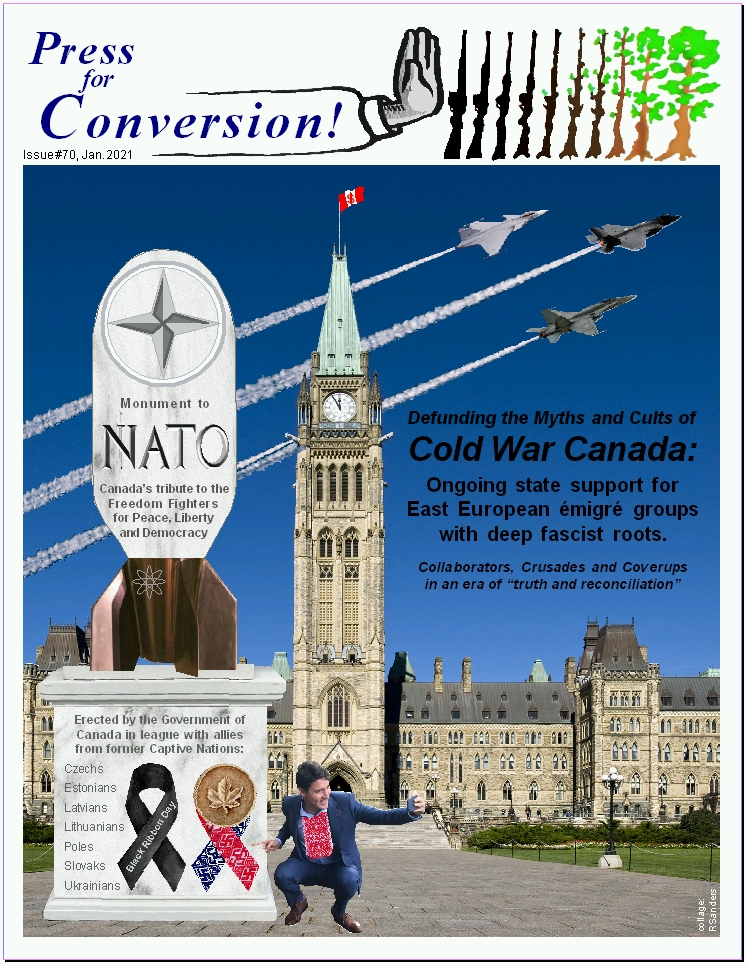
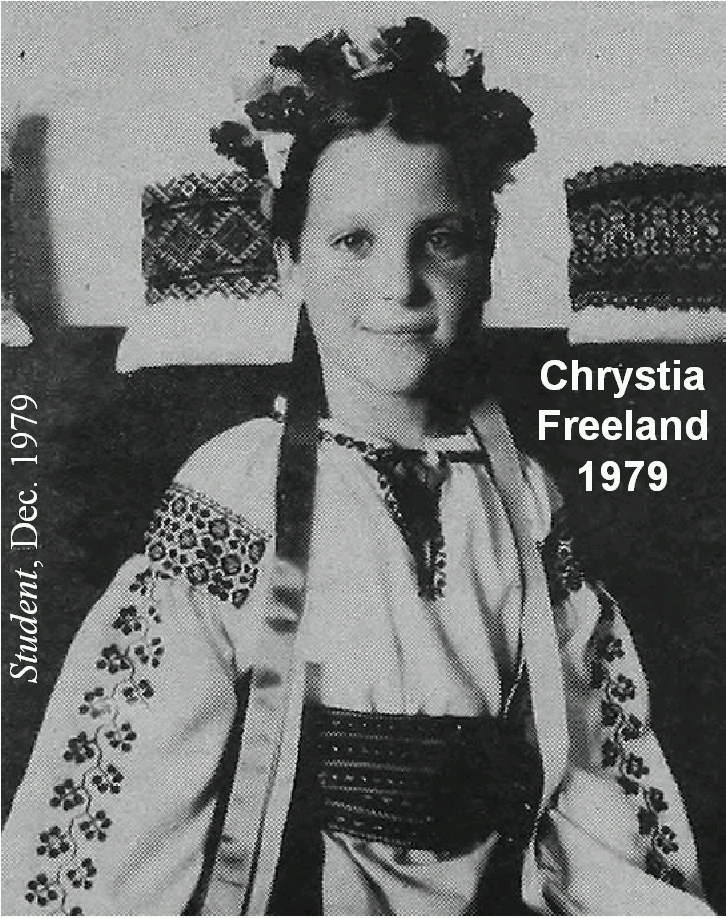 As
children, Chrystia Freeland and her friend
As
children, Chrystia Freeland and her friend
 Freeland
joined Edmonton’s Plast troop in 1977. That year, her mother, Halyna Chomiak
Freeland, another intensely passionate Ukrainian nationalist, separated from her
nonUkrainian husband and left Peace River, Alberta. Upon moving to Edmonton,
Chrystia Freeland could become much closer to her mother’s father, Michael
Chomiak (aka Mykhailo Khomiak), his other children and to their extended
families. Chomiak had been the Nazi’s top Ukrainian-language news propagandist
in Europe throughout WWII. Upon coming to Canada after the war he became deeply
involved in Edmonton’s Ukrainian community, which makes up 14% of the city’s
total population.3
Freeland
joined Edmonton’s Plast troop in 1977. That year, her mother, Halyna Chomiak
Freeland, another intensely passionate Ukrainian nationalist, separated from her
nonUkrainian husband and left Peace River, Alberta. Upon moving to Edmonton,
Chrystia Freeland could become much closer to her mother’s father, Michael
Chomiak (aka Mykhailo Khomiak), his other children and to their extended
families. Chomiak had been the Nazi’s top Ukrainian-language news propagandist
in Europe throughout WWII. Upon coming to Canada after the war he became deeply
involved in Edmonton’s Ukrainian community, which makes up 14% of the city’s
total population.3  While this may be Freeland’s first appearance
in print media, four members of her family (the children of Michael Chomiak)
were involved in Student for about a decade. Her uncle Bohdan Chomiak had
been on its staff (1972, 1978-80) and was a frequent contributor during the
1970s.5 His aunts (Chrystia, Natalka and Halyna Chomiak) were also active in the
magazine. Freeland’s aunt, Chrystia Chomiak, edited issues of Student
(1969-70) and was involved in organising, producing and publishing it
(1973-74).6 Natalka Chomiak wrote for Student and worked for its
publishers (1972-74), the Ukrainian Canadian Students Union (SUSK).7 Chrystia
Freeland’s mother, Halyna Chomiak Freeland, also wrote for Student. In
her late 20s in 1974, she penned an article giving insights into childhood
"pressures" from her parents (Alexandra and Mykhailo) and the Ukrainian
community:
While this may be Freeland’s first appearance
in print media, four members of her family (the children of Michael Chomiak)
were involved in Student for about a decade. Her uncle Bohdan Chomiak had
been on its staff (1972, 1978-80) and was a frequent contributor during the
1970s.5 His aunts (Chrystia, Natalka and Halyna Chomiak) were also active in the
magazine. Freeland’s aunt, Chrystia Chomiak, edited issues of Student
(1969-70) and was involved in organising, producing and publishing it
(1973-74).6 Natalka Chomiak wrote for Student and worked for its
publishers (1972-74), the Ukrainian Canadian Students Union (SUSK).7 Chrystia
Freeland’s mother, Halyna Chomiak Freeland, also wrote for Student. In
her late 20s in 1974, she penned an article giving insights into childhood
"pressures" from her parents (Alexandra and Mykhailo) and the Ukrainian
community: Freeland
has also passed on the tradition to her own family. She has for example involved
her children in a Toronto festival which is likely the world’s largest Ukrainian
nationalist event outside Ukraine. (The local branch of the Ukrainian Canadian
Congress (UCC) has received $667,000 since 2009 to organize this event.11) In
2013, when Freeland was the Liberal Party’s "star candidate" running for
parliament, she was honoured to be the festival’s Parade Marshal. Heading the
parade were a boy and girl in traditional Ukrainian dress carrying the event’s
official banner. Then came veterans bearing the flags of Ukraine, Canada, the US
and NATO. Behind them was a military-style band with 40 uniformed youth marching
in formation. Next in line was Freeland waving from a vintage white Cadillac
with her young children. Another military-style band soon
marched by with 60 uniformed members12 of the UYA. This affiliate of the League
of Ukrainian Canadians represents the OUN(B) faction of Ukrainian nationalists.
As such, these Bandera youth are taught to hail their fascist war hero with
cult-like reverence.
Freeland
has also passed on the tradition to her own family. She has for example involved
her children in a Toronto festival which is likely the world’s largest Ukrainian
nationalist event outside Ukraine. (The local branch of the Ukrainian Canadian
Congress (UCC) has received $667,000 since 2009 to organize this event.11) In
2013, when Freeland was the Liberal Party’s "star candidate" running for
parliament, she was honoured to be the festival’s Parade Marshal. Heading the
parade were a boy and girl in traditional Ukrainian dress carrying the event’s
official banner. Then came veterans bearing the flags of Ukraine, Canada, the US
and NATO. Behind them was a military-style band with 40 uniformed youth marching
in formation. Next in line was Freeland waving from a vintage white Cadillac
with her young children. Another military-style band soon
marched by with 60 uniformed members12 of the UYA. This affiliate of the League
of Ukrainian Canadians represents the OUN(B) faction of Ukrainian nationalists.
As such, these Bandera youth are taught to hail their fascist war hero with
cult-like reverence.  Toronto’s Ukrainian Festival has everything
to be expected from these annual family events: music, dancing, food, and
politicians from all levels of government and Canada’s three largest political
parties. It has also permitted fundraising for a far-right paramilitary group
whose street fighters are known for brutal violence in Ukraine. Toronto’s 2014
Ukrainian Festival allowed Right Sector Canada to raise money to buy military
equipment for their fighters in Ukraine. CBC’s TV news showed Right Sector’s
table with images of Bandera.13 That year’s festival received a $99,700 Canadian
government handout.14
Toronto’s Ukrainian Festival has everything
to be expected from these annual family events: music, dancing, food, and
politicians from all levels of government and Canada’s three largest political
parties. It has also permitted fundraising for a far-right paramilitary group
whose street fighters are known for brutal violence in Ukraine. Toronto’s 2014
Ukrainian Festival allowed Right Sector Canada to raise money to buy military
equipment for their fighters in Ukraine. CBC’s TV news showed Right Sector’s
table with images of Bandera.13 That year’s festival received a $99,700 Canadian
government handout.14  In 2016, when Freeland marched with her
children in this Ukrainian parade, Right Sector Canada marched close behind
them. Among them, Ukrainian youth carried a banner bearing a large portrait of
Bandera. The red and black battle flag of his Ukrainian Insurgent Army was held
high.15 To hold that year’s parade, UCC-Toronto received $58,200 in federal
government funds.16
In 2016, when Freeland marched with her
children in this Ukrainian parade, Right Sector Canada marched close behind
them. Among them, Ukrainian youth carried a banner bearing a large portrait of
Bandera. The red and black battle flag of his Ukrainian Insurgent Army was held
high.15 To hold that year’s parade, UCC-Toronto received $58,200 in federal
government funds.16 This Toronto festival and similar events
continue to demonstrate that Canada’s far-right Ukrainian diaspora is alive and
well. This ethnonationalist community continues to thrive thanks in no small
part to ongoing government funding that has funneled millions in grants to their
right-wing member groups and events.
This Toronto festival and similar events
continue to demonstrate that Canada’s far-right Ukrainian diaspora is alive and
well. This ethnonationalist community continues to thrive thanks in no small
part to ongoing government funding that has funneled millions in grants to their
right-wing member groups and events. 
